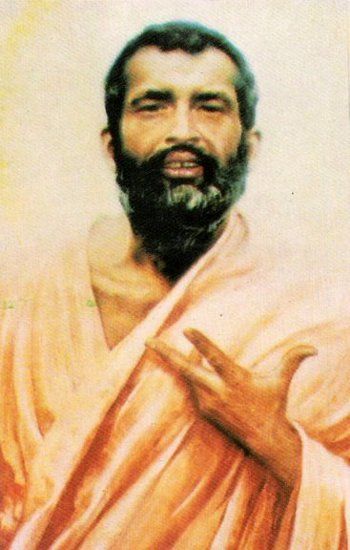

Sri Ramakrishna (1836–1886) was an Indian Bengali Hindu mystic.
Born Gadadhar on 18 February 1836 in the village of Kamarpukur about sixty miles northwest of Kolkata. His parents, Kshudiram Chattopadhyaya and Chandramani Devi, were poor but very pious and virtuous. As a child he was dearly loved by the villagers.
From early days, he had strong disinclination towards formal education and worldly affairs. He was, however, a talented boy, and could sing and paint well.
He was fond of serving holy men and listening to their discourses.
He was oftentimes found to be absorbed in spiritual moods. At the age of six, he experienced the first ecstasy while watching a flight of white cranes moving against the background of black clouds. This tendency to enter into ecstasy intensified with age. His father’s death when he was seven years old served only to deepen his introspection and increase his detachment from the world.
Born as he was during a social upheaval in Bengal in particular and India in general, Ramakrishna and his movement – Ramakrishna Mission – played a leading role in the modern revival of Hinduism in India, and on modern Indian history.
Ramakrishna and his chief disciple Swami Vivekananda are regarded as two of the key figures in the Bengal Renaissance of 19th century. Ramakrishna played a leading role in the modern revival of Hinduism in India and the movement – Ramakrishna Mission – his inspiration has deeply influenced modern Indian history.
Ramakrishna is also regarded as an influential figure on Keshab Chandra Sen and other Brahmos and on the Elite of Calcutta, the bhadralok. Ramakrishna advocated bhakti and the Bhagavad Gita occupies an important place in his discourses.
Ramakrishna preferred “the duality of adoring a Divinity beyond himself to the self-annihilating immersion of nirvikalpa samadhi”, and he helped “bring to the realm of Eastern energetics and realization the daemonic celebration that the human is always between a reality it has not yet attained and a reality to which it is no longer limited”.
He was given a name that is from the Vaishnavite tradition (Rama and Krishna are both incarnations of Vishnu), but was a devotee of Kali, the mother goddess, and known to have followed or practiced various other religious paths including Tantrism, Christianity and Islam.
Vivekananda – Ramakrishna’s most illustrious disciple, is considered by some to be one of his most important legacies.
Vivekananda spread the message of Ramakrishna across the world. He also helped introduce Hinduism to the west. He founded two organizations based on the teachings of Ramakrishna. One was Ramakrishna Mission, which is designed to spread the word of Ramakrishna. Vivekananda also designed its emblem. Ramakrishna Math was created as a monastic order based on Ramakrishna’s teachings.

The temples of Ramakrishna are called the Universal Temples. The first Universal temple was built at Belur, which is the headquarters of the Ramakrishna Mission.
Sri Ramakrishna represents the very core of the spiritual realizations of the seers and sages of India. His whole life was literally an uninterrupted contemplation of God. He reached a depth of God-consciousness that transcends all time and place and has a universal appeal. Seekers of God of all religions feel irresistibly drawn to his life and teachings. Sri Ramakrishna, as a silent force, influences the spiritual thought currents of our time.
He is a figure of recent history and his life and teachings have not yet been obscured by loving legends and doubtful myths.
Through his God-intoxicated life Sri Ramakrishna proved that the revelation of God takes place at all times and that
God-realization is not the monopoly of any particular age, country, or people.
In him, deepest spirituality and broadest catholicity stood side by side.
The God-man of nineteenth-century India did not found any cult, nor did he show a new path to salvation. His message was his God-consciousness.
When God-consciousness falls short, traditions become dogmatic and oppressive and religious teachings lose their transforming power. At a time when the very foundation of religion, faith in God, was crumbling under the relentless blows of materialism and skepticism, Sri Ramakrishna, through his burning spiritual realizations, demonstrated beyond doubt the reality of God and the validity of the time-honored teachings of all the prophets and saviors of the past, and thus restored the falling edifice of religion on a secure foundation.
Drawn by the magnetism of Sri Ramakrishna’s divine personality, people flocked to him from far and near — men and women, young and old, philosophers and theologians, philanthropists and humanists, atheists and agnostics, Hindus and Brahmos, Christians and Muslims, seekers of truth of all races, creeds and castes.
His small room in the Dakshineswar temple garden on the outskirts of the city of Calcutta became a veritable parliament of religions. Everyone who came to him felt uplifted by his profound God-consciousness, boundless love, and universal outlook.
Each seeker saw in him the highest manifestation of his own ideal.
By coming near him the impure became pure, the pure became purer, and the sinner was transformed into a saint.
The greatest contribution of Sri Ramakrishna to the modern world is his message of the harmony of religions. To Sri Ramakrishna all religions are the revelation of God in His diverse aspects to satisfy the manifold demands of human minds. Like different photographs of a building taken from different angles, different religions give us the pictures of one truth from different standpoints. They are not contradictory but complementary.
Sri Ramakrishna faithfully practiced the spiritual disciplines of different religions and came to the realization that all of them lead to the same goal.
Thus he declared,
“As many faiths, so many paths.”
The paths vary, but the goal remains the same. Harmony of religions is not uniformity; it is unity in diversity.
It is not a fusion of religions, but a fellowship of religions based on their common goal — communion with God.
This harmony is to be realized by deepening our individual God-consciousness.
In the present-day world, threatened by nuclear war and torn by religious intolerance, Sri Ramakrishna’s message of harmony gives us hope and shows the way.
May his life and teachings ever inspire us.
Sri Ramakrishna Teachings
See God In All
I have now come to a stage of realization in which I see that God is walking in every human form and manifesting Himself alike through the sage and the sinner, the virtuous and the vicious. Therefore when I meet different people I say to myself, “God in the form of the saint, God in the form of the sinner, God in the form of the righteous, God in the form of the unrighteous.”
God Is Within You
Do you know what I see? I see Him as all. Men and other creatures appear to me only as hollow forms, moving their heads and hands and feet, but within is the Lord Himself.
Perservere In Your Search For God
There are pearls in the deep sea, but one must hazard all to find them. If diving once does not bring you pearls, you need not therefore conclude that the sea is without them. Dive again and again. You are sure to be rewarded in the end. So is it with the finding of the Lord in this world. If your first attempt proves fruitless, do not lose heart. Persevere in your efforts. You are sure to realize Him at last.
Trust Completely In God
What are you to do when you are placed in the world? Give up everything to Him, resign yourself to Him, and there will be no more trouble for you. Then you will come to know that everything is done by His will.
Love Of God Is Essential
Unalloyed love of God is the essential thing. All else is unreal.
Books
Sri Sri Ramakrishna Kathamrita (Gospel )
Videos
Pictures
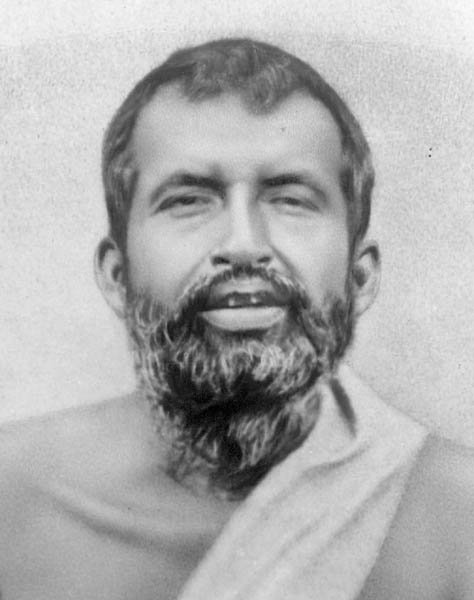
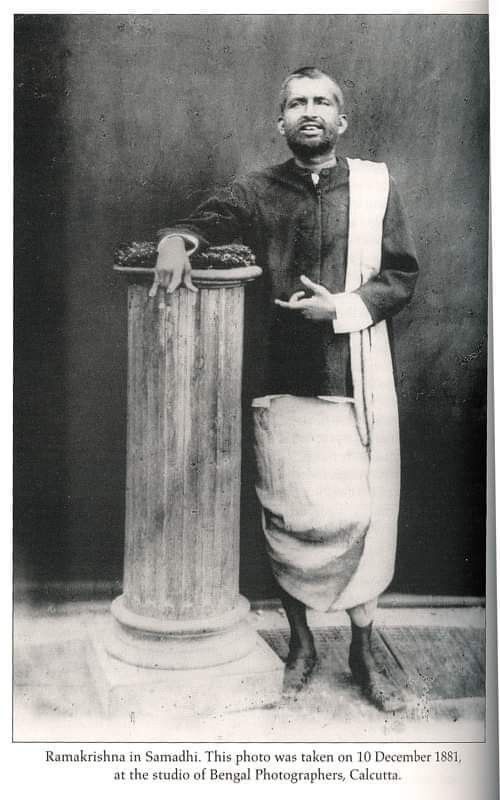
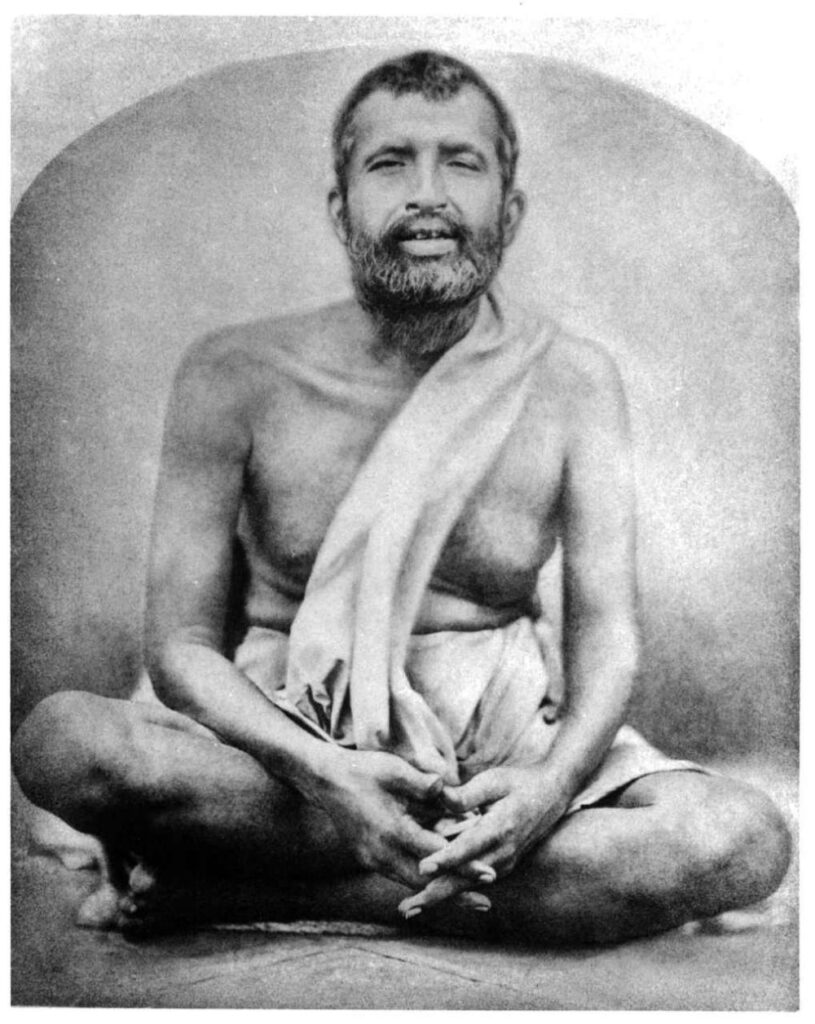
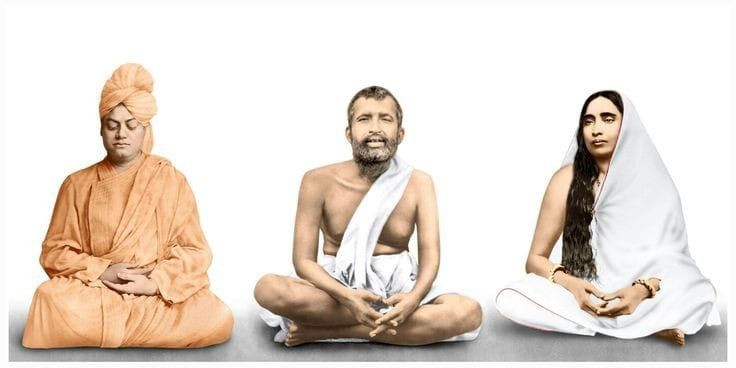
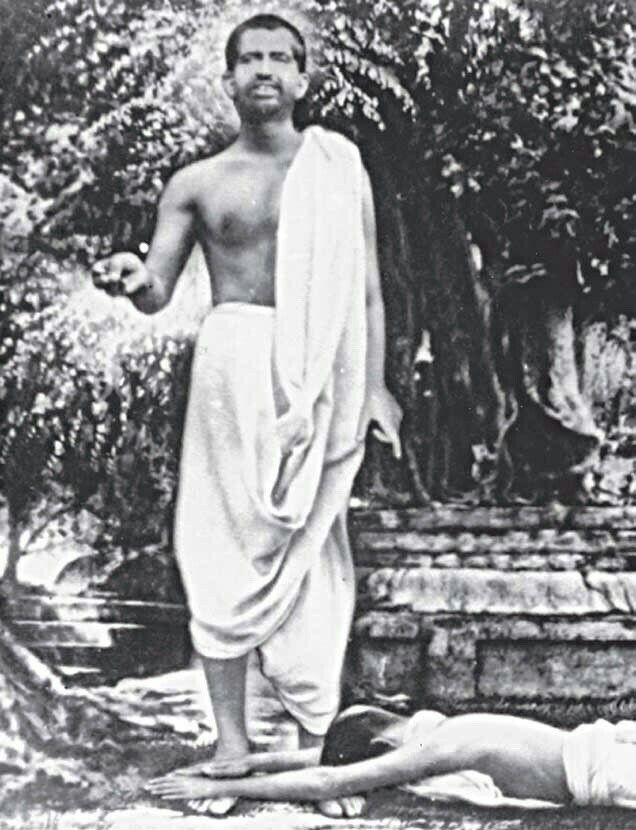
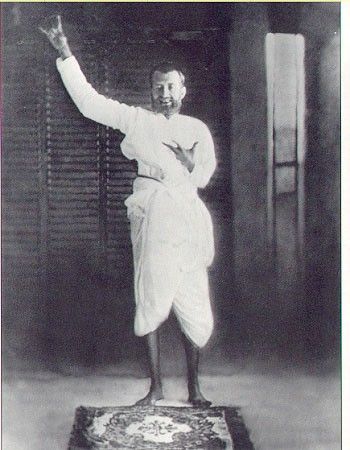
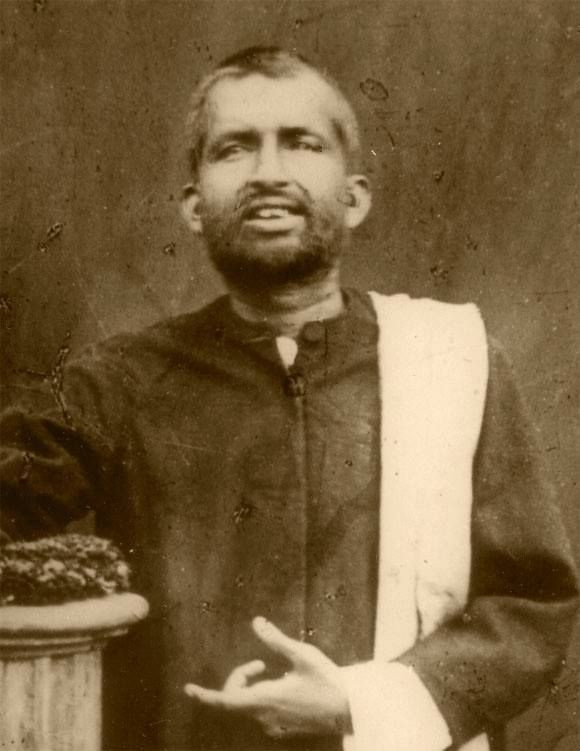
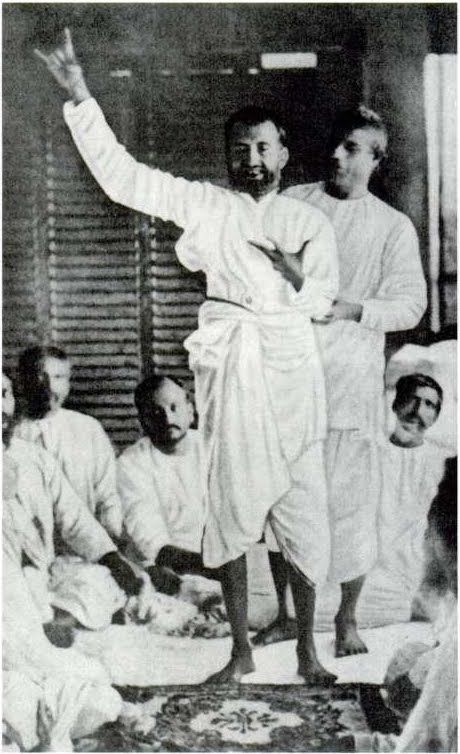
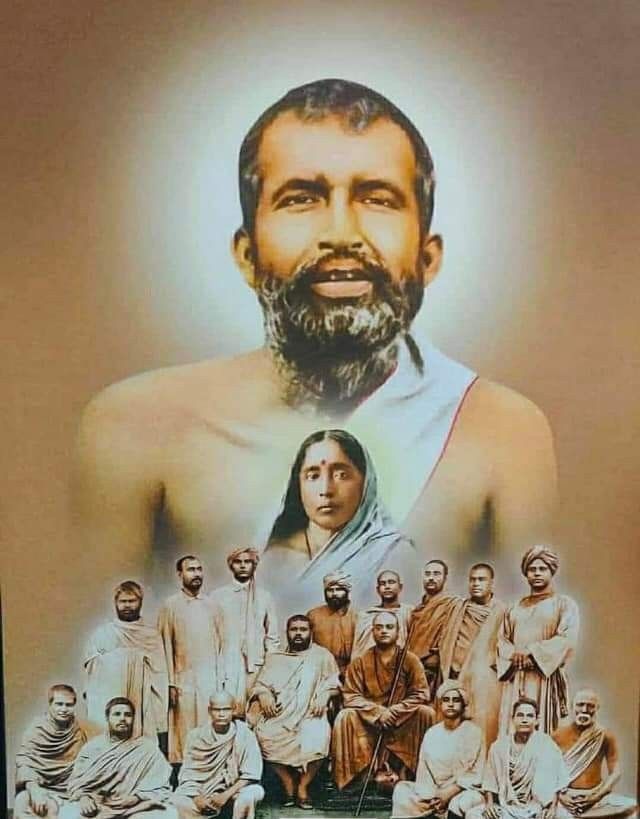
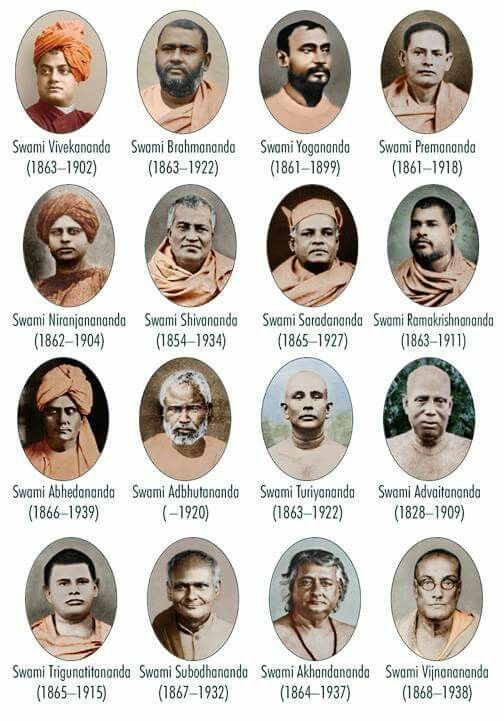

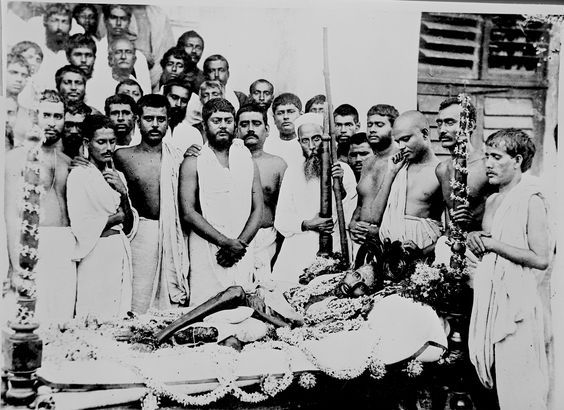
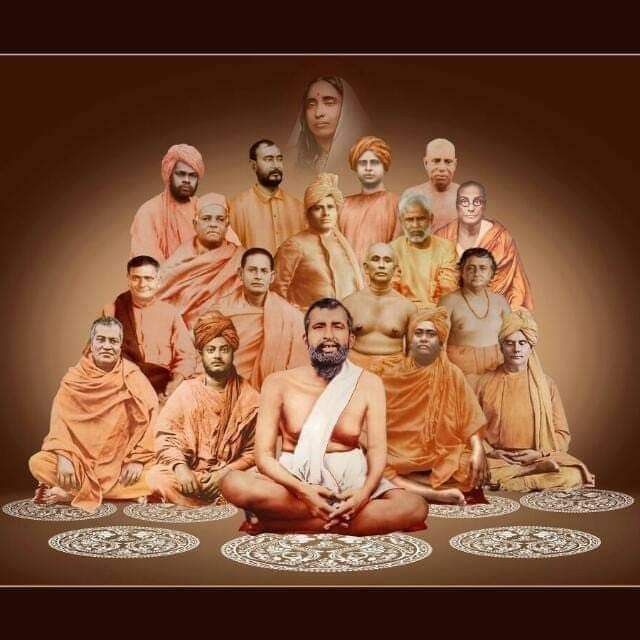
Discpiples
Sri Mahendra Nath Gupta (Master Mahasaya)
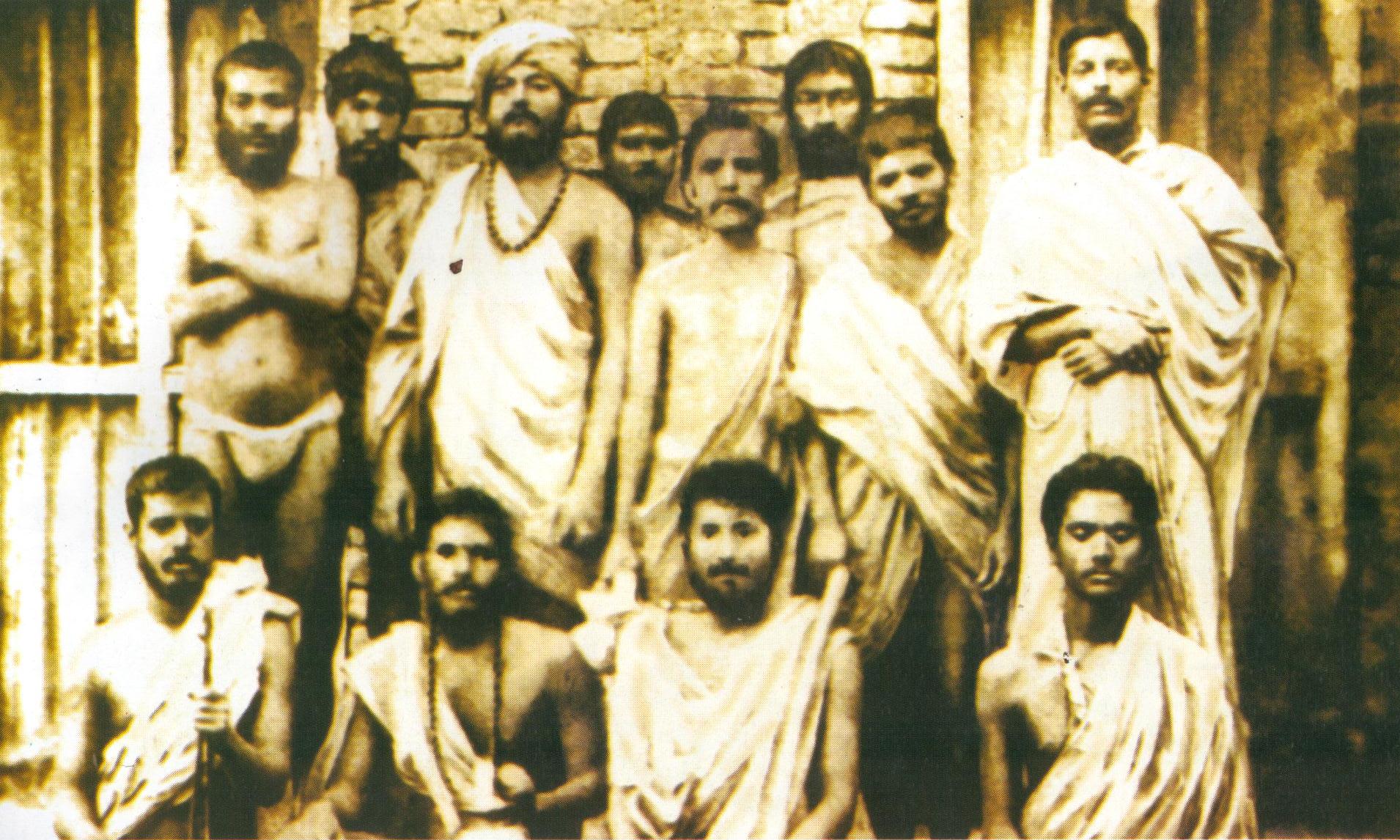
This image was taken on 30 January 1887 In Baranagar Math, Kolkata, India. Photographer is unknown. This group photo depicts Swami Vivekananda with other disciples of Ramakrishna. In this image: Standing: (from left to right) Shivananda, Ramakrishnananda, Swami Vivekananda (1863-1902), Randhuni (cook, some publications have identified this person as Swami Premananda), Debendranath Majumdar, Mahendranath Gupta (Shri M), Trigunatitananda, H.Mustafi Sitting: (from left to right) Niranjanananda, Saradananda, Hootko ‘Gopal’ (some publications have identified him as Swami Brahmananda), Abhedananda.
Information source Śaṅkara (2005) Acenā ajānā Bibekānanda (6. saṃskaraṇa. ed.), Kalakātā: Sahityam, pp. 11